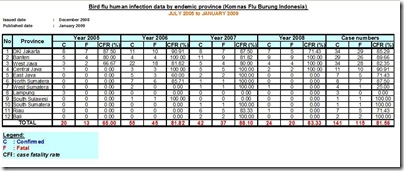# 2734
Yesterday, at 11am, the Minnesota Pandemic Ethics Project website opened to the public, presenting two draft plans (PDF files) on how that state can deal with expected shortages of personnel, hospital beds, and medical supplies during a pandemic.
- This report contains rationing frameworks that are unique to each of these resources: antiviral medications, N95 respirators, surgical masks, pandemic vaccines and mechanical ventilators. Most frameworks include one set of guidelines for prioritizing different groups in the general public and another set for prioritizing key workers. The report also has background information about pandemic influenza, the project team’s process, assumptions made for this project and next steps. comments.
- This report offers recommendations that address issues about the practical application of ethical frameworks for rationing in an influenza pandemic. While such ethical frameworks for rationing play a critically important role in pandemic planning and response, important questions nonetheless remain about how their moral guidance can be practically implemented in the enormously complex context of actual pandemic planning and response. These recommendations concern broad practical issues that span the ethical frameworks.
The first PDF file, including appendixes and references, runs 84 pages. The second PDF file runs 95 pages. As you might imagine, I haven't even begun to examine these documents in detail.
Luckily, Lisa Schnirring of CIDRAP (Centers For Infectious Disease Research & Policy) News gives us an excellent first look at these documents, and where the discussion is expected to go from here.
You'll want to spend some time looking over these documents, but first, follow the link to read the entire article.
Minnesota groups issue reports on allocating pandemic resources
Lisa Schnirring
Staff Writer
Jan 30, 2009 (CIDRAP News) – Minnesota health groups today unveiled two preliminary guidance reports designed to help the state make and implement difficult decisions about allocating scare resources such as antivirals, respirators, ventilators, and vaccines during a severe influenza pandemic.
In accepting the groups' reports today at a press conference, Sanne Magnan, MD, PhD, commissioner of the Minnesota Department of Health (MDH), said the avian influenza virus was a hot topic in 2007 when the MDH hired the Minnesota Center for Health Care Ethics (MCHCE) and the University of Minnesota Center for Bioethics (UMCB) to study the issue and start writing guidance documents. Though bird flu news has waned in the public's consciousness, "the strain that triggered the concern is still making people ill in Asia and Africa," she said.
Magnan said the reports predict that in a pandemic as bad as the one in 1918, more than 30,000 Minnesotans will die. "And there will not be enough of anything we need to treat the ill," she added.
The preliminary reports clearly articulate the nonmedical criteria that will help public officials fairly distribute scarce pandemic resources, Magnan said, adding, "This does provide a roadmap for negotiating the difficult landscape, but doesn't tell us how to drive the car."
A vital next step is to gather public feedback to ensure that the final reports reflect the shared values of Minnesotans, she said, adding that transparency and trust may help community members understand the decisions health officials may someday have to make. Today MCHCE and UMCB launched a Web portal to gather public feedback on the draft documents.
Magnan told reporters that over the coming months the groups will also host town hall meetings in two Minnesota cities and convene six focus groups to review the recommendations.
Jan 30 MDH press release
Jan 30 preliminary report on ethically rationing Minnesota health resources in a severe influenza pandemic
Jan 30 preliminary report on implementing the ethical framework for rationing scarce health resources in Minnesota during a severe pandemic
Public comment portal for pandemic ethics and implementation reports
Oct 31, 2006, CIDRAP News story "Pandemic vaccine rationing proposal favors the young"






